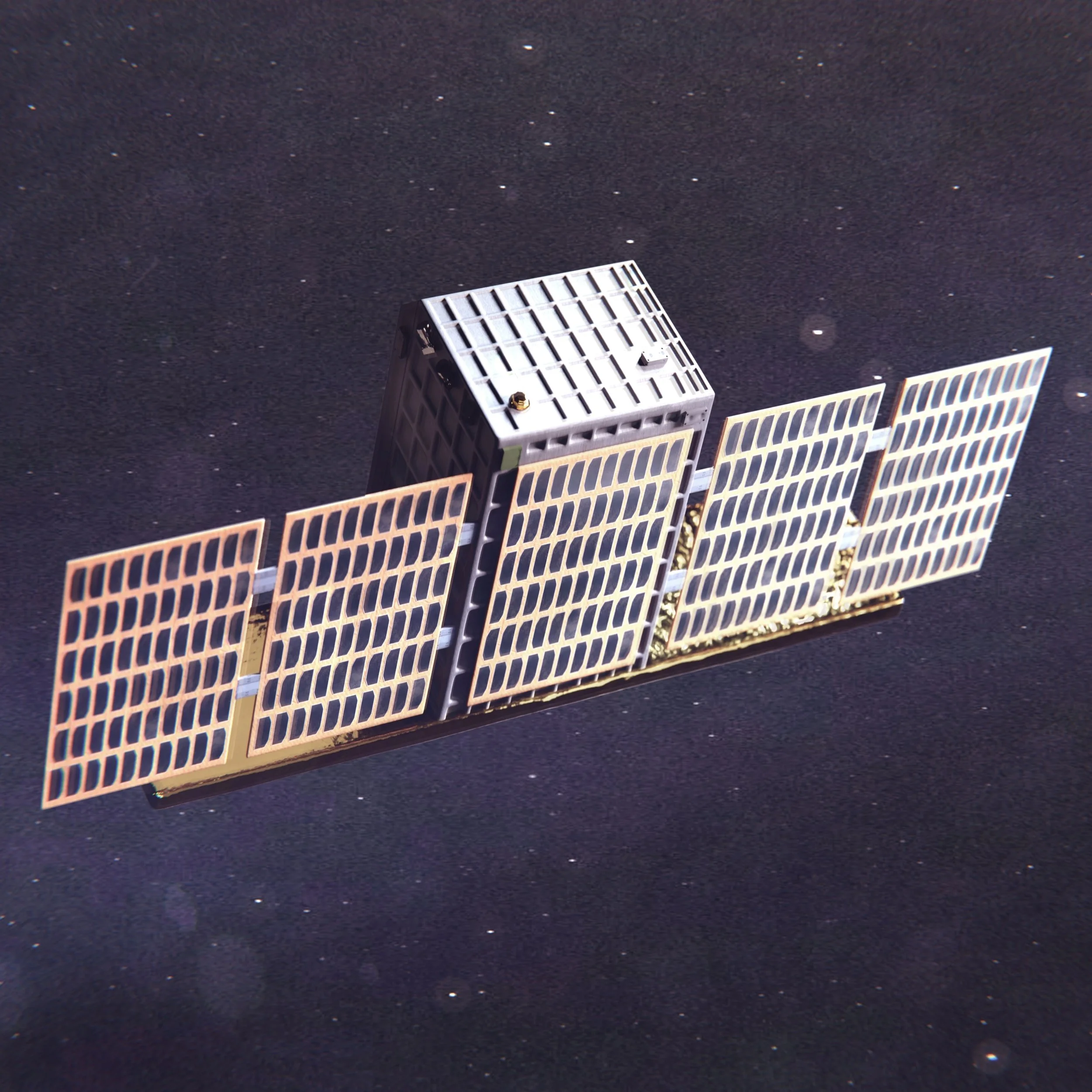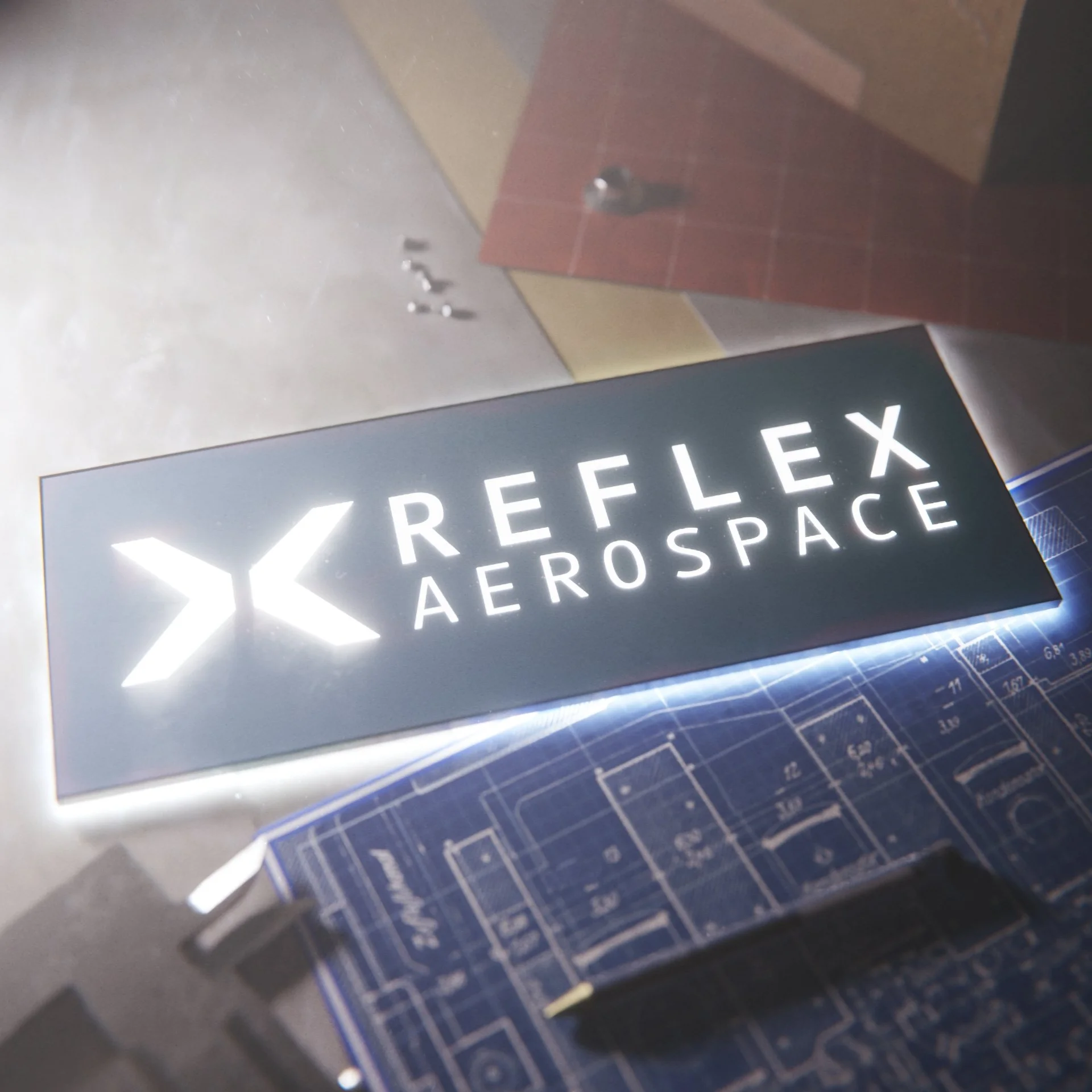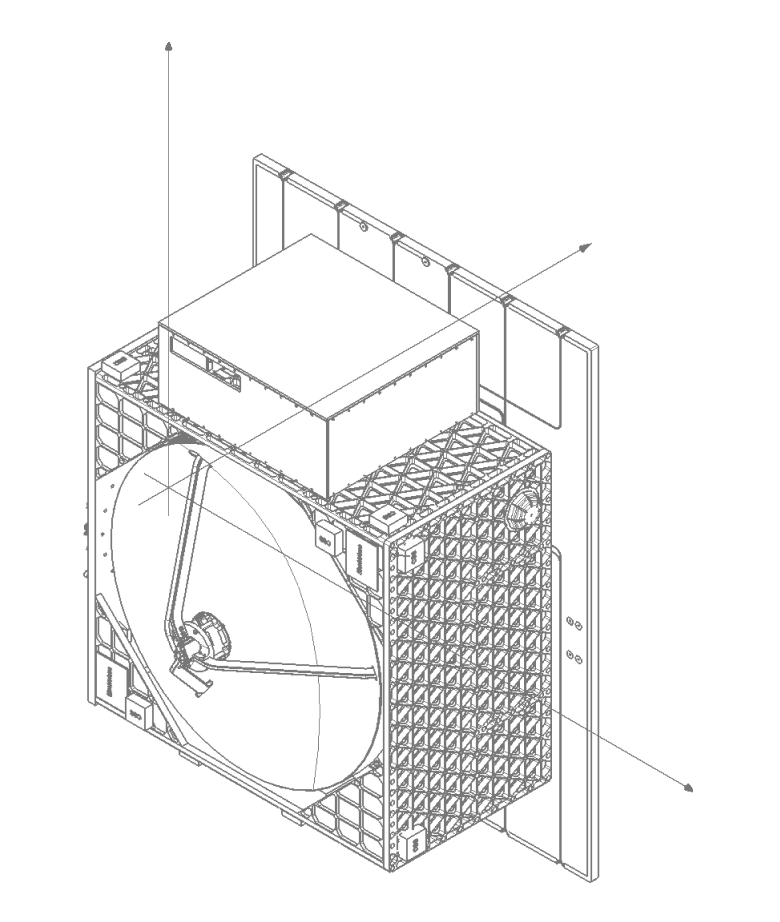Custom satellites built in 12 months? Exploring the frontiers of satellite engineering with Reflex Aerospace
Collaboration between MM3D and Reflex Aerospace reveals the exciting visual reality behind the concept of custom-built LEO satellites.
A 3D render produced by MM3D depicting a satellite design in the process of production by Reflex Aerospace.
Only a few short decades ago, launching a satellite into space was an arduous and expensive process. Research by Citigroup[1] highlighted that in the 1960’s, NASA spent approximately $100,000 per kilogram of satellite payload to be sent into orbit. By the late 60’s this figure had dropped to around $16,000-per-kilogram on average. Once SpaceX entered the market in 2010 with the Falcon 9, the cost fell dramatically, to $2,500/kg.
It is clear even just from these figures that satellite deployment technology has seen remarkable improvement in a relatively short space of time, leading to the proliferation of small, cheaper satellites often used in Low Earth Orbit (LEO) by research groups. This new launch affordability offers exciting opportunites for satellite technology start-ups. An industry once restricted to only the largest nationally-funded bodies is now becoming open to smaller groups of science-minded individuals looking to push the boundaries of human knowledge.
One such start-up is Reflex Aerospace, a Berlin-based company[2] with the goal of manufacturing satellites that provide a unique mix between the affordability of the new smaller “CubeSats” and much larger “Classic Space” satellites. Classic Space units are defined by high performance and reliability, but require expensive launch preparation due to their greater mass and technical sophistication. CubeSats by contrast offer a cheap option for accessing space, but can suffer from poor functionality or reliability. A sensible middle ground between the two approaches seems a natural path for development.
The company is certainly not short on ambition; in addition to this challenging technical endeavour of developing affordable-yet-high-performance payload platforms, Reflex also sets their sights on delivering these new-build satellites to clients within a 12-month turnaround time.
These fast-production satellites also offer a broad range of utility. Reflex creates platforms for “SatCom” (communications satellites including broadcasting, military and defence uses and disaster relief organisation), GPS systems and remote sensor instrumentation, among other uses. Use cases that previously would have required a huge, bulky payload are now possible with much more compact and cost-efficient setups.
An interesting dichotomy has emerged in the manufacturing ethos applied to satellite production, spurred on by these concerns of functionality-versus-affordability. Companies are increasingly focusing on either mass-production through traditional “mega-scale” factory operations or specialising in production using “microfactories”. The latter are much smaller installations that are less concerned with throughput and more so with the ability to create intricate custom satellite setups. Despite the utility of satellites, some are calling into question the viability of massive factory complexes[3], alleging that overall demand is in fact not sufficient to warrant the scale of production of such facilities.
The apparent advantages of smaller-scale, bespoke manufacturing over huge corporate machining plants therefore also offer additional openings for newcomers to the industry to flourish. In a world often dominated by capital-heavy entrenched corporate institutions, the burgeoning satellite industry is a refreshing reminder that smaller start-ups can also have a lot of room to succeed.
Founded in 2021, the start-up has already been making impressive strides towards becoming a significant player in the custom satellite manufacturing industry.
In 2024, Reflex Aerospace contracted MM3D to produce several realistic 3D renderings of LEO satellite designs in early production by the company. The first stage of the project was the processing and modification of engineering-suitable CAD files into higher polygon, PBR-textured 3D models suitable for high-detail visualisation.
This was accomplished through remodelling the base low-polygon CAD 3D mesh for the satellite body, as well as recreating high-poly versions of modules attached to the satellite that would be placed close to the camera view. While basic CAD files are excellent for gauging dimensions, basic shapes and possibly even direct manufacturing use, they also lack fundamental properties that are important in 3D visualisation. For example, CAD meshes are typically not UV unwrapped, allowing application of only simple textures that lack advanced reflectivity or bump-mapping.
The low polygon count of most CAD files also means that straight edges tend to be unnaturally sharp. This generates an uncanny, unrealistic feeling in the viewer that can be alleviated by bevelling sharp edges or (as in this case), remodelling the mesh with a Subdivision workflow.
After the upgrades to the base CAD mesh were finished, a wide aperture lens was used to give the satellite the appropriate visual scale. The detailed static renders were then further enhanced through post-processing. Adding film grain, lens distortion and careful colour grading helps to give the realistic, familiar visual feeling evoked when observing objects in space through a camera.
A schematic of a Reflex Aerospace satellite featured on the company website.
The end result of this process was a detailed realistic model suitable for use in concept renders, advertising, investor meetings or company brochures.
In many ways, 3D design and complex technical projects share a remarkable synergy with one another. 3D models can be reviewed and changed with relative ease, offering detailed visual proof-of-concept for complicated technologies. Finished high-detail models can also be stored easily within a company’s digital archives, reviewed within a moment’s notice in a fashion that is often more intuitive than revisiting detail-laden engineering schematics.
In conclusion, whatever the future of cost-effective satellite manufacturing may hold, it is clear that companies like Reflex Aerospace operate in a dynamic and fast-moving marketplace that is prone to rapid change as technology advances. Watching the company evolve over the coming years in response to such an operating environment will no doubt prove fascinating to both casual observers and industry professionals alike.
—
References:
[2] - Reflex Aerospace Website
[3] - Space News - Megafactories Versus Microfactories
—-
If you would like to discuss the procurement of highly detailed CGI renders for your tech-industry product, contact us today on the site.



